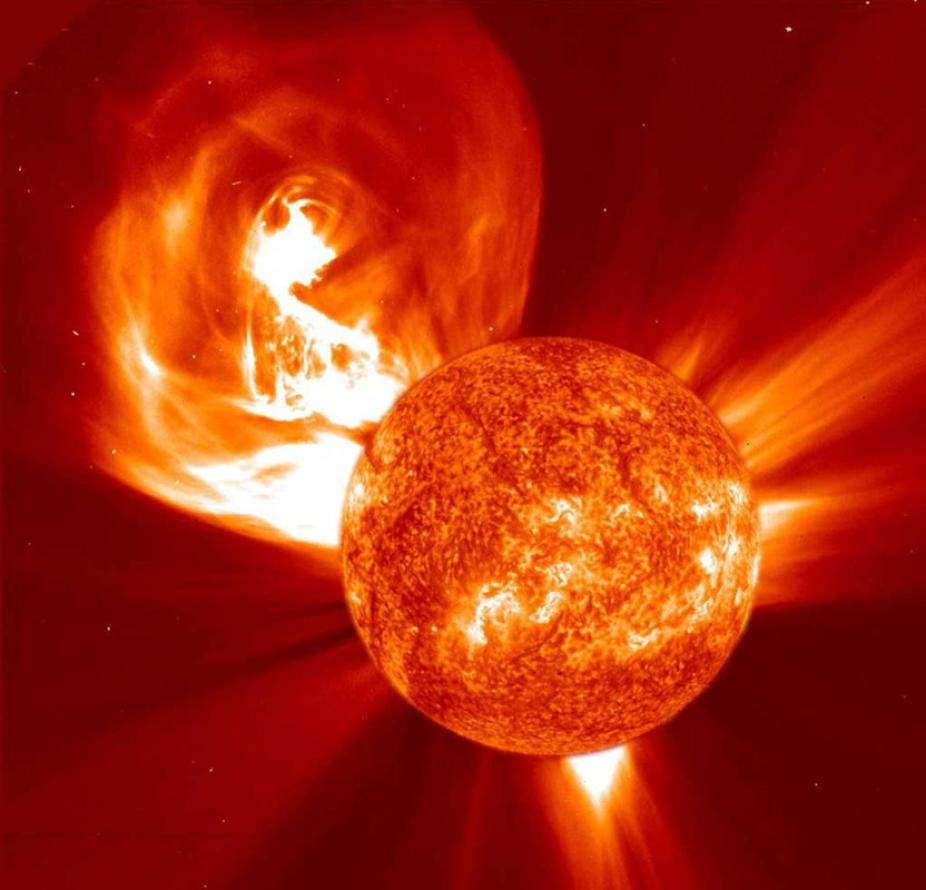Why is it important to study the Sun?
Variations of the Sun's output do occur, and these affect the Earth's climate. Indeed, tree ring studies and ice core studies indicate a correlation between Earth's ice ages and the Sun's activity.

A large coronal mass ejection (CME) blasting solar material into space.
SOHO (ESA/NASA)
The Sun’s powerful eruptions can also disrupt life on Earth. Coronal mass ejections (or CMEs) occur when large amounts of material are ejected from the Sun’s corona into interplanetary space. These CMEs can carry a million tons of material out towards the planets at a million miles an hour (almost a billion kg at 27 million m/s). When a portion of this material reaches the Earth's outer atmosphere, it impacts satellites, perturbing their orbits, scoring their surfaces, and disrupting communications. The solar material can slide down the Earth's magnetic field lines and cause the phenomenon known as aurora, and also burn out power grids. CMEs occur perhaps once a month or so during solar minimum, and up to twice or more a day at solar maximum (read more about the solar cycle).